As the chill of October settles in and leaves turn golden, it’s time for Halloween. While the imagery of jack-o’-lanterns, witches, and ghosts springs to mind, Halloween is also about food and treats and special celebrations. Many cultures harbor their unique culinary traditions that intertwine with this spooky season.
Let’s embark on a journey from Ireland’s enigmatic barmbrack, laden with hidden trinkets that foretell the future, to the symbolic sugar skulls of Mexico.
Ireland’s barmbrack and its hidden charms
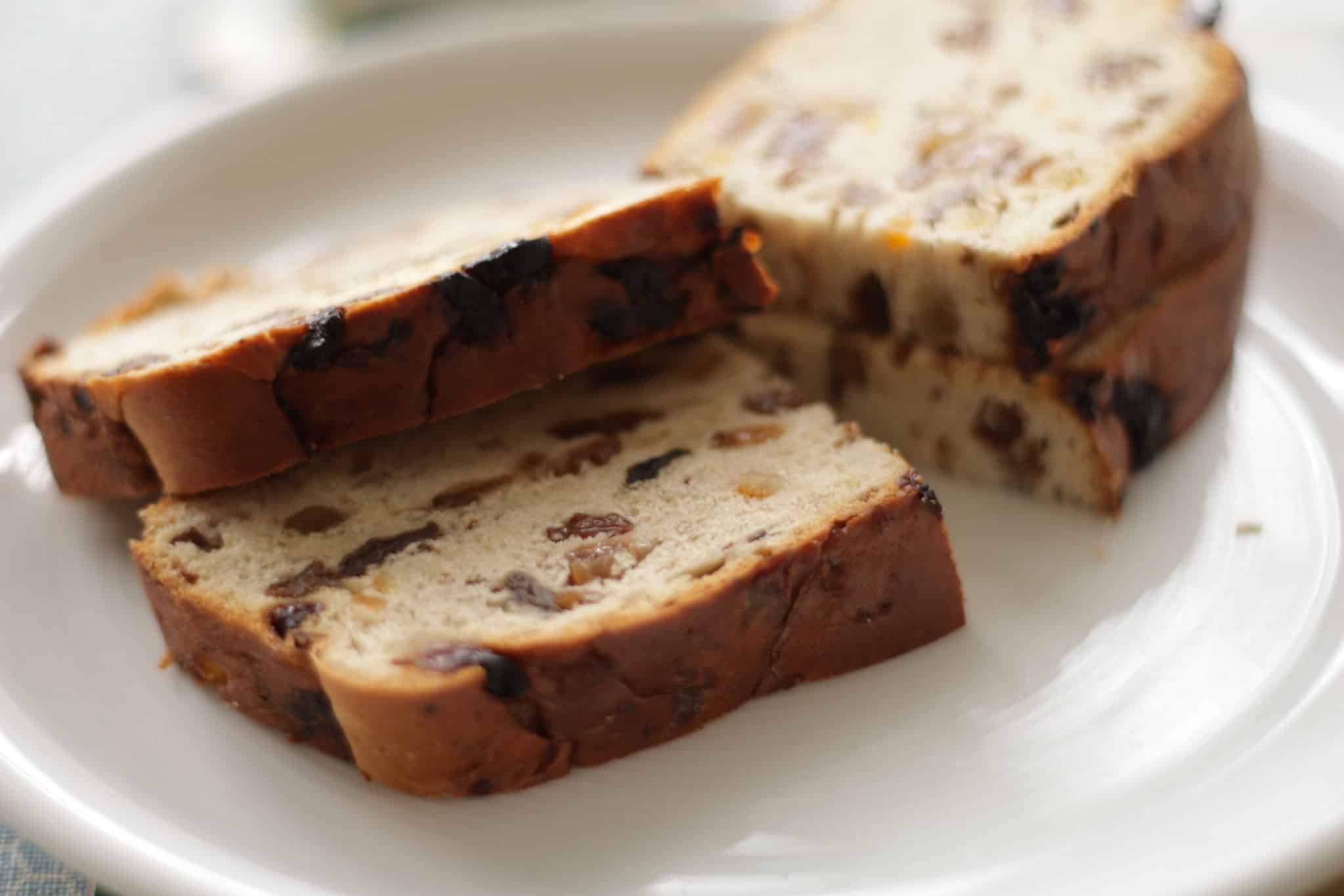
Barmbrack, often referred to as “brack” for short, is a traditional Irish fruitcake that is closely associated with Halloween. It’s more than just a cake; it’s a part of Irish folklore and customs surrounding the Halloween season.
The tradition of barmbrack dates back to ancient Celtic times and the festival of Samhain, which marked the end of the harvest season and the beginning of winter. Samhain was a time when the boundary between the living and the dead was believed to be at its thinnest, and spirits could cross over into the world of the living.
Over time, as Christianity spread, these pagan traditions blended with Christian customs, and many of the old practices, including the barmbrack tradition, were integrated into the modern Halloween celebrations we know today. Nowadays, Halloween Brack is most commonly served toasted with butter along with a cup of tea, and it’s also made around New Year.
The Halloween Brack traditionally contains various objects baked into it, and each object carries a specific meaning for the person who finds it in their slice:
- A Ring: Suggests that the person will be married within the year.
- A Coin: Symbolizes wealth or good fortune.
- A Pea: Indicates that the person will not marry that year.
- A Stick: A sign of an unhappy marriage or disputes.
- A Cloth or Rag: Represents bad luck or poverty.
- A Bean: a poverty year.
People would eagerly await their slice of the cake, curious to find out what the future holds for them based on the object they’d discover.
The sweet skulls of Mexico’s sugar art
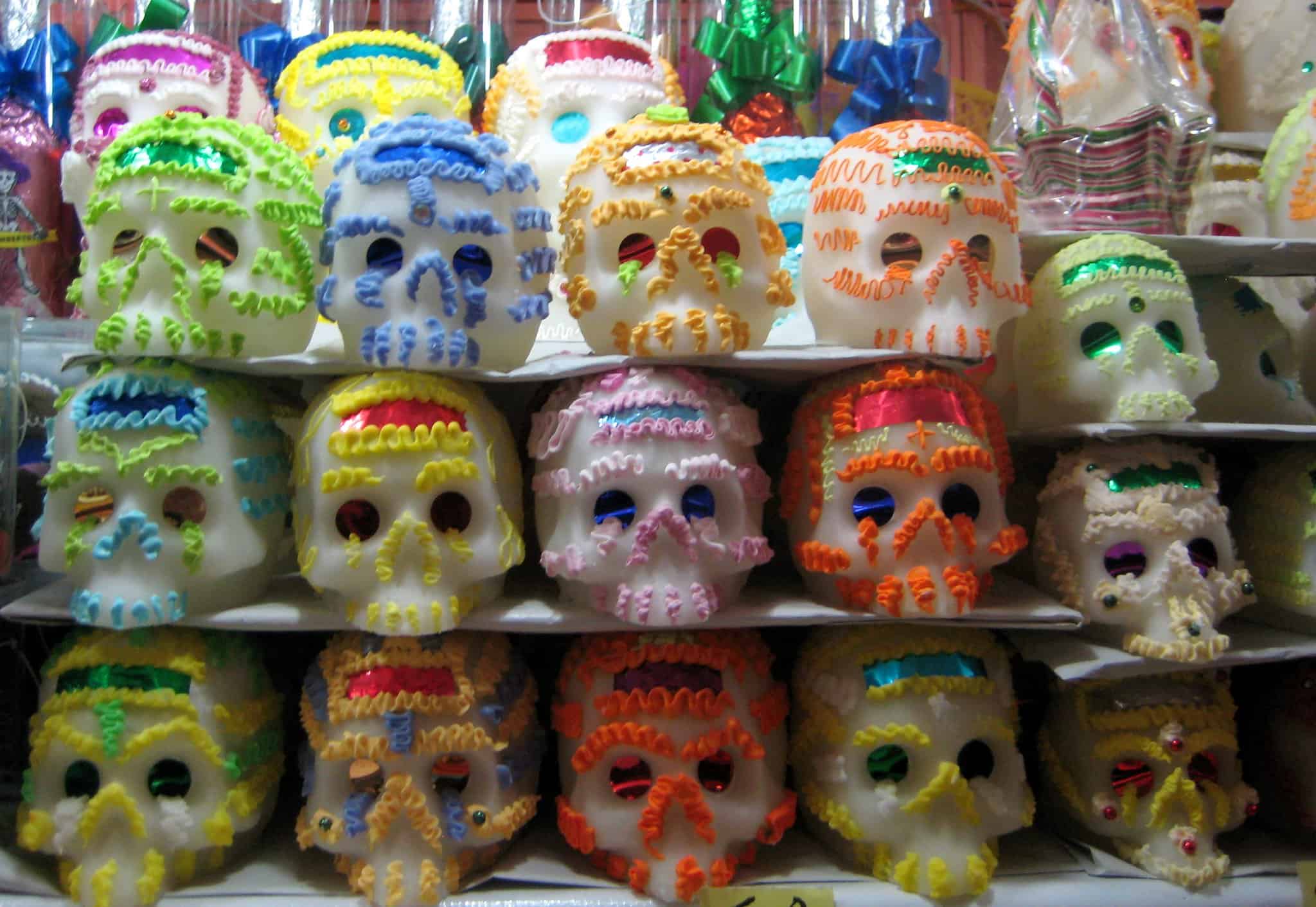
Mexico’s sugar skulls (calaveras de azúcar) are not technically associated with Halloween. Instead, they are a significant symbol for the “Día de los Muertos” or “Day of the Dead” celebrations in Mexico.
Día de los Muertos is a multi-day holiday that honors and remembers deceased loved ones. It takes place from October 31st to November 2nd and has its roots in ancient Aztec traditions that have been blended with Catholic practices over the centuries. The holiday is a blend of pre-Hispanic indigenous beliefs and Spanish Catholic traditions.
Sugar skulls are often colorful and intricately decorated. They can be made from sugar, chocolate, or amaranth seeds. The names of the deceased are often written on the forehead of the sugar skull, and they are placed on altars (ofrendas) dedicated to the departed. These altars also feature other offerings like food, beverages, photos, and marigold flowers to welcome the souls of the deceased during the celebration.
It’s important to keep in mind that while sugar skulls and the Day of the Dead celebrations might coincide with the timing of Halloween, and both deal with somewhat similar themes, they have different cultural origins and meanings. Halloween has its roots in Celtic traditions and has evolved into a more commercial and secular holiday, while Día de los Muertos is a deeply spiritual and cultural event in Mexico, honoring the lives of the departed.
Romania’s mămăligă, a dish often associated with Dracula’s homeland
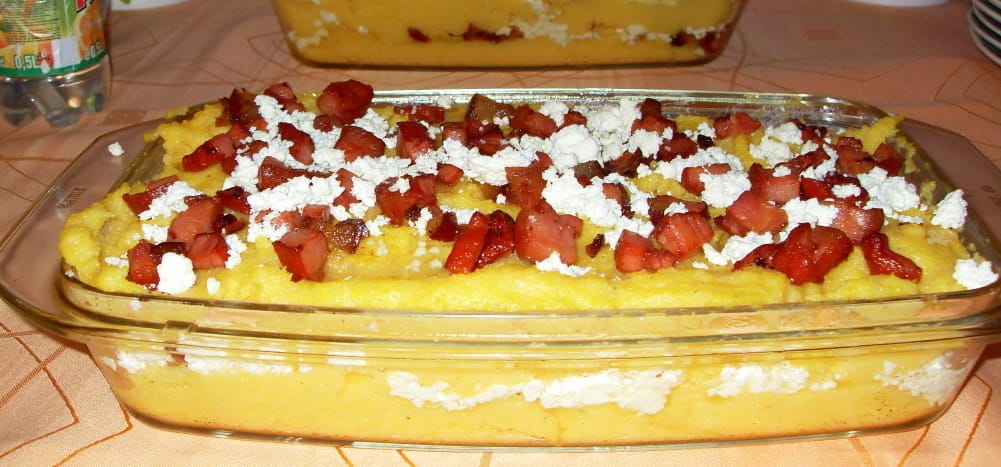
Mămăligă (pronounced ‘muh-muh-lee-gah’) is a traditional Romanian dish made from yellow maize flour, water, and salt. It’s similar to polenta and can be served as a side dish, often accompanying stews, meats, or cheeses. While mămăligă is a staple in Romanian cuisine, it is not specifically associated with Halloween or any particular holiday.
However, a dish from Dracula‘s homeland has to be a good fit with Halloween, right?
If one wants to incorporate mămăligă into a Halloween-themed meal, they can get creative:
- Shape and Presentation: Mold the mămăligă into spooky shapes, such as skulls or pumpkins, using molds or free-hand sculpting.
- Toppings: Use toppings like sauces, veggies, or meats to create Halloween-themed designs or faces on the mămăligă.
- Complementary Dishes: Serve mămăligă alongside dishes that have a Halloween twist, such as a “bloody” beet soup or meat “fingers.”
The versatility of this dish means it can be paired with many dishes and it’s a good one to get creative with. In many traditional settings, mămăligă serves as a replacement for bread. Its neutral flavor profile makes it an ideal accompaniment for both rich, hearty dishes and simpler, lighter fare.
Scotland: “Dumb Supper”
“Dumb Supper” is a traditional Scottish (and also Celtic and Irish) ritual associated with Samhain, which is considered the ancient precursor to modern Halloween. The word “dumb” in this context means “silent.”
The table is set with places for both the living and the deceased. It’s believed that the spirits of loved ones can visit during this meal. Traditional dishes like “Colcannon” (mashed potatoes with cabbage or kale and butter) are often served.
The “Dumb Supper” is not a specific dish but rather a ceremonial meal. The ritual involves preparing and serving a meal in complete silence, in honor of the dead. An extra plate is often laid out for the spirits of the deceased, and the food served is intended as an offering to them. The idea is to invite the spirits of loved ones to join the living for a meal, creating a bridge between the worlds of the living and the dead.
During the supper, participants might also turn off all lights, using only candles to illuminate the space. Sometimes, people would also set a mirror at the table, believing it would allow them to see the spirits of their departed loved ones.
Italy: Ossa dei Morti (Bones of the Dead)
This is another dish that’s not directly related to Halloween but can be integrated into Halloween celebrations.
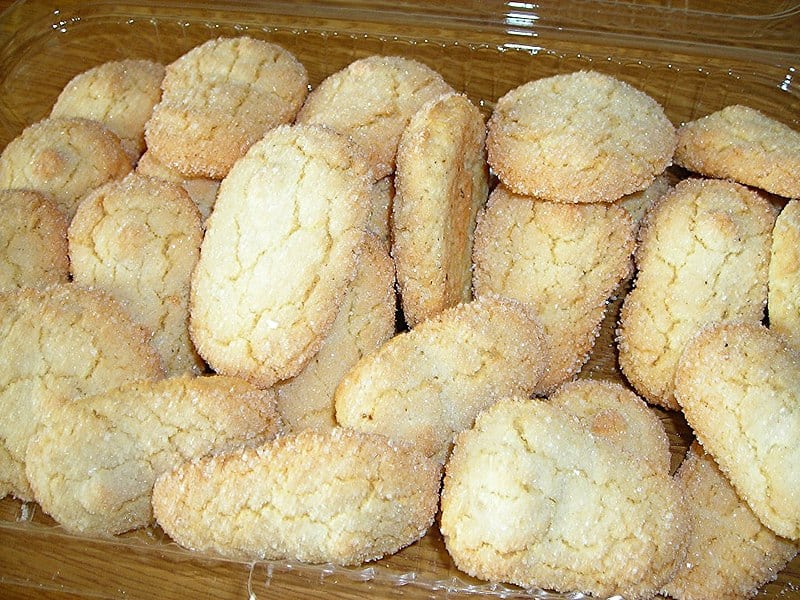
These are almond cookies that are traditionally made in various parts of Italy for the Day of the Dead (All Souls’ Day) celebrations in November. Crunchy and bone-like in appearance, their name and design make them fitting for the spooky season.
Given their thematic relevance to the dead and their skeletal appearance, “Ossa dei Morti” can easily be incorporated into Halloween festivities. Their crunchy texture and almond or hazelnut flavor make them a delightful treat for the occasion.
The cookies are made with a mixture of flour, sugar, almonds or hazelnuts, egg whites, and sometimes a touch of spices or citrus zest. They are baked until they have a crunchy texture, and their irregular shape somewhat resembles bones, hence the name.
Panellets
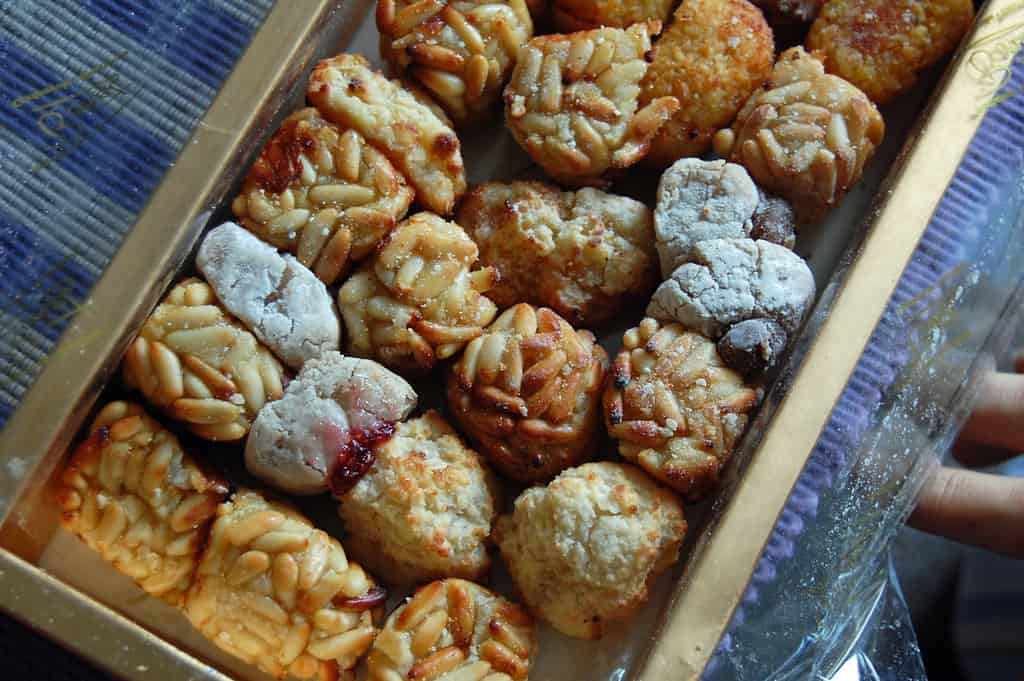
Panellets are traditional Catalan sweets made primarily from marzipan (a mixture of almond paste, sugar, and egg). They are most commonly associated with the celebration of “La Castanyada” in Catalonia, Spain. “La Castanyada” is a festival that takes place on All Saints’ Day (November 1st) and is a time to remember and honor the deceased.
These are small pastries made primarily from marzipan (almond paste). Traditionally consumed during “All Saints’ Day” (Día de Todos los Santos), panellets come in various shapes and flavors, with the most traditional being covered in pine nuts and resembling small pine cones.
Though panellets are not specifically “Halloween” treats, their association with a festival that shares thematic elements with Halloween means they could be incorporated into Halloween festivities, especially if one is aiming for a more international or unique celebration.
Portugal: Pão-por-Deus

“Pão-por-Deus” (literally “Bread for God” in English) is a tradition in Portugal that takes place on November 1st, during All Saints’ Day like in Italy and Spain. While it’s not a Halloween dish in the way that many in the Western world think of Halloween, it shares thematic elements with the holiday.
The “Pão-por-Deus” tradition involves children going door-to-door in their neighborhoods or villages, reciting verses or songs, and asking for treats or offerings, which can include bread, cakes, nuts, and candies. The tradition is reminiscent of the “trick-or-treat” custom of Halloween, although its origins and meanings are different.
Historically, “Pão-por-Deus” has roots in the remembrance of the dead and acts of charity. The tradition began after the earthquake in Lisbon in 1755, when survivors would ask for food in remembrance of those who had died. Over time, the practice evolved, and children started to carry on the tradition of asking for treats.
While “Pão-por-Deus” is not a specific dish, the treats given during this tradition could be considered special foods for the occasion, much like Halloween candies in other parts of the world.






